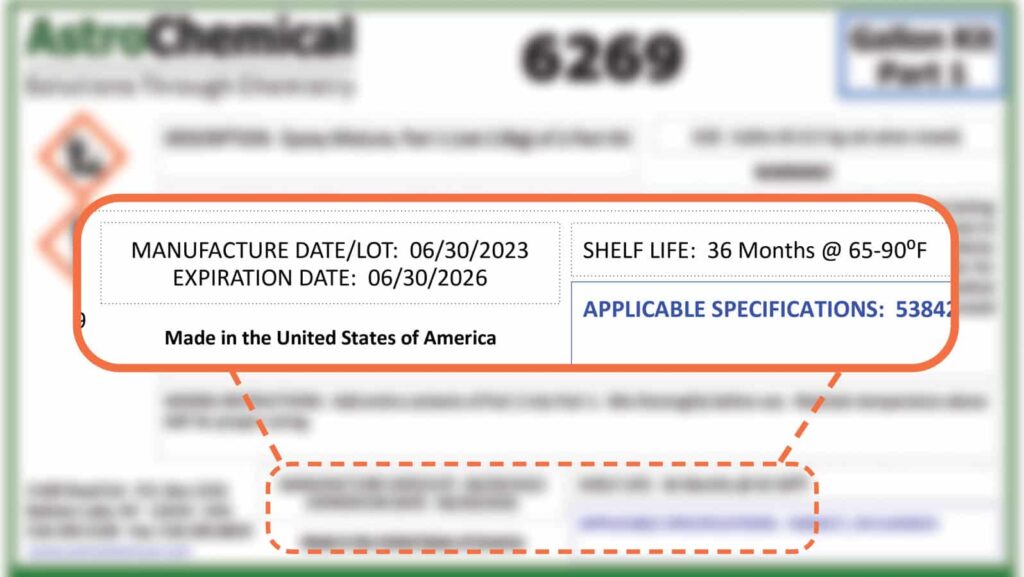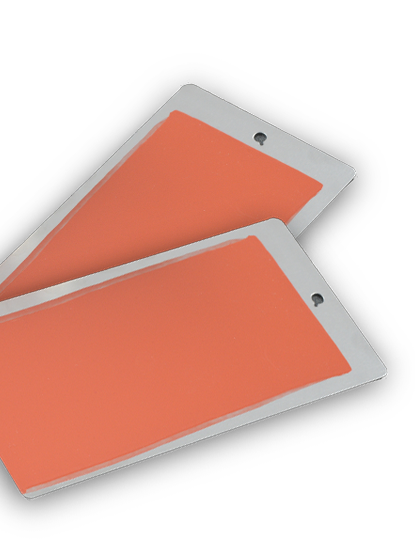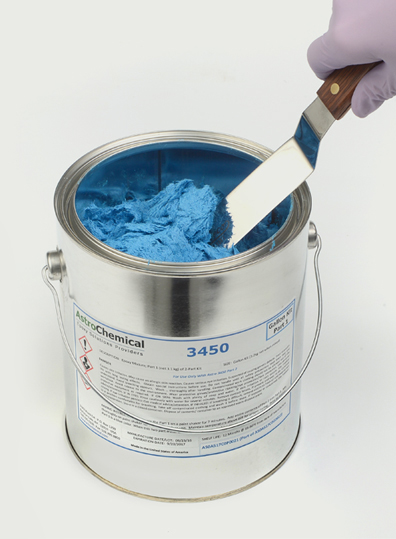
Proper storage conditions are crucial to maintaining the quality and optimal shelf-life of a coating, adhesive, saturant or encapsulant. Shelf-life can be defined as the period of time a product may be stored and remain suitable for use, retaining the ability to achieve the intended functional properties when properly cured. Recommended storage conditions and the usable shelf-life are based on extensive testing and the product’s chemistry. Herein we discuss the storage and shelf-life guidelines of the various products we develop and manufacturer.
General Storage Recommendation
Astro products should always be stored in a temperature-controlled environment (typically “room-temperature” or 60°F to 85°F) and sealed in their original containers. Storage temperature guidance may be found on the Astro product label. It should be noted that certain chemistries will require special storage conditions, such as refrigeration, to ensure quality and maximum shelf-life. As is noted below, certain chemistries may be stable for longer than their posted shelf-life, and may be candidates for shelf-life extension (recertification).
Users should always consult the product label for storage guidance and expiration dates, and always follow a FIFO (first-in, first-out) inventory cycling practice with shelf-life sensitive products.
Two-Component Systems
Unfilled Epoxy Systems (100% Solids)
Of all the products that Astro develops and manufactures, these chemistries are the most stable, typically affording a two- or three-year shelf-life. The term “unfilled” means that the system does not contain solvents, additives or fillers. This family of chemistries are also excellent candidates for retesting and recertification if properly stored.
While lower temperatures may slow any potential chemical interactions, it will increase the chance of crystallization in certain resins (see our FAQ on Crystallization). Higher temperatures may increase the corrosivity of certain epoxy catalysts and may diminish the reactivity of certain resins. It is therefore still important to follow the storage recommendations for each product.
Filled Epoxy Systems (100% Solids)
“Filled” 100% solids epoxy systems contain engineered fillers designed to impart a specific rheology profile, enhance mechanical strength, enable required electrical properties, and/or increase thermal conductivity. Like unfilled epoxy formulations, these can be stored for significant time before requiring recertification. Unlike unfilled systems, the consistency (rheology) of filled systems can change with time, even under ideal storage conditions. Systems filled with thixotropic fillers will thicken over time, whereas denser fillers may often settle. Typically, these systems can be recovered and recertified for shelf-life extension given their inherent chemical stability. It is important to consult the Technical Data Sheet or reach out to the Astro Technical Team for additional guidance.
Solvent-Based Epoxy Systems
These products primarily consist of epoxy paint systems in which solvent is present within the formulation to achieve a certain viscosity and ‘dry’ time while curing. Two-component epoxy paint systems are filled systems, and therefore are susceptible to rheological changes over time. Storage conditions are critical for these products as many of the solvents used in epoxy paints are flammable or combustible and must be keep away from sources of heat and/or flame. These products are good candidates for retesting and recertification given their inherent chemical stability.
Polyester Systems
Due to their chemical composition, polyester systems exhibit a definitive expiration date. After the prescribed shelf-life period at recommended storage conditions, the chemistry changes past the point where it is no longer able to cure to achieve the intended properties. It should be noted that once past this expiry date, the physical properties will not appear to have changed so it is important to abide by posted expiry dates provided on the product container label.
Single-Component Systems
Epoxy Systems
Single-component epoxy systems combine the epoxy resin and a ‘latent’ catalyst which will react very slowly at ambient temperatures, but will cure when heated to its initiation temperature.
These have a definitive shelf-life and should be stored at cold temperature (35°F – 50°F recommended) for maximum stable shelf-life. These materials should never be stored over 85°F (30°C) for more than 48 hours and will otherwise lose substantial performance when cured.
These systems will slowly react or ‘gel’ over time and once past their expiry date will be noticeably thicker than when fresh, so a visual inspection can be a good indicator of usability.
Alkyd Systems
Single component alkyd systems are either solvent-based or water-reducible, with solvent-based alkyd systems the most stable of the two. All alkyd systems cure through an oxidative reaction with catalysts within the chemistry which require the presence of oxygen to initiate cure. When stored in their original sealed containers, this reaction is so slow that it is considered negligible. The actual usable life can be longer than posted, thus solvent-based alkyd systems are excellent candidates for retesting and recertification.
Water-reducible alkyd systems are stabilized by pH which will naturally drop with time. Once the pH falls past a certain point, the product becomes unstable. Monitoring shelf-life and storage conditions is integral to maintaining maximum shelf-life. Refrigerated storage will not extend shelf-life, and is not recommended as it may affect the water component. These chemistries should also never be stored for more than a few days over 85°F, and ideally never beyond 77°F for an extended period of time.
Specialty Packaging Note
Cartridge, burst-pouch, and other specialty delivery systems will often introduce limitations to product shelf-life. This can be attributable to effects of the packaging process, the packaging materials, and/or the effectiveness of the sealing method. Astro products packaged in cartridge, pouch or similar form will typically be limited to a 12-month shelf-life at room-temperature storage.
Consistent with our general guidelines, it is advised to always consult the product label for the most current storage guidance, product shelf-life, and expiry date.


